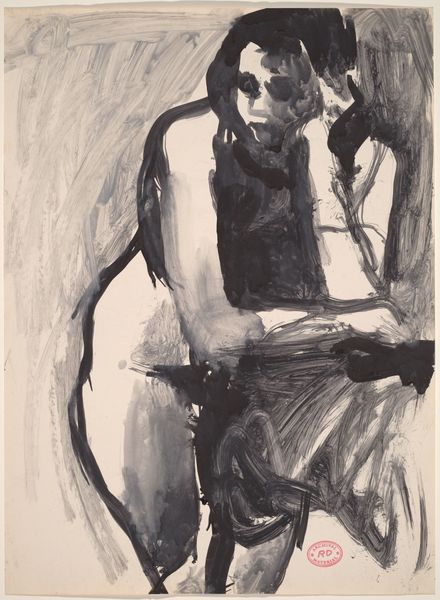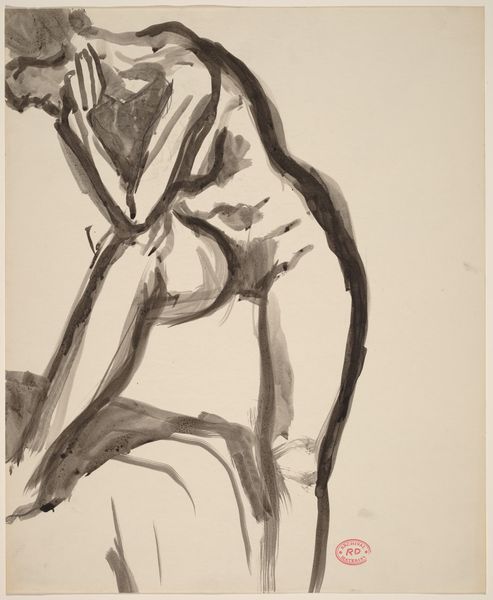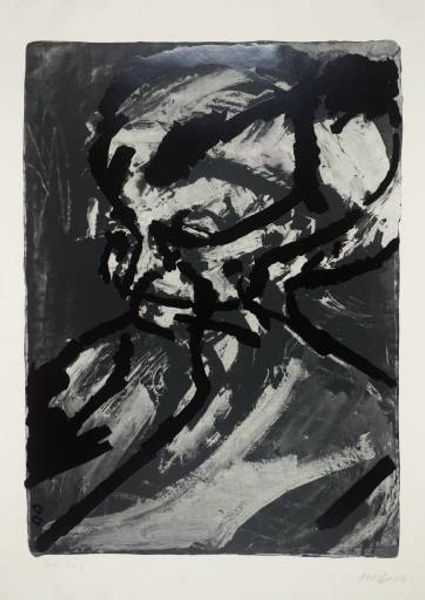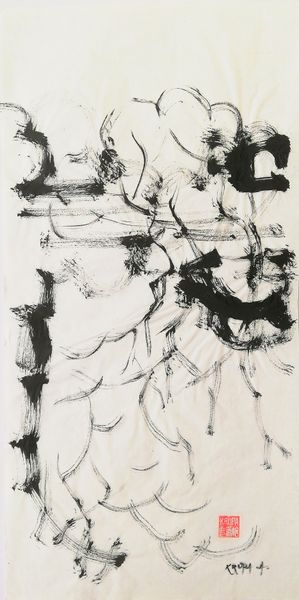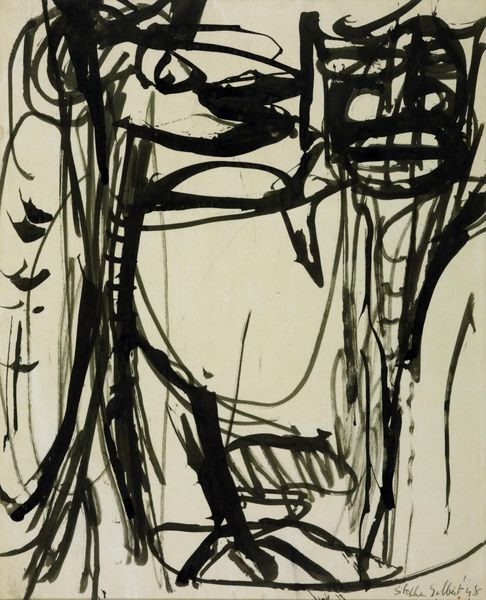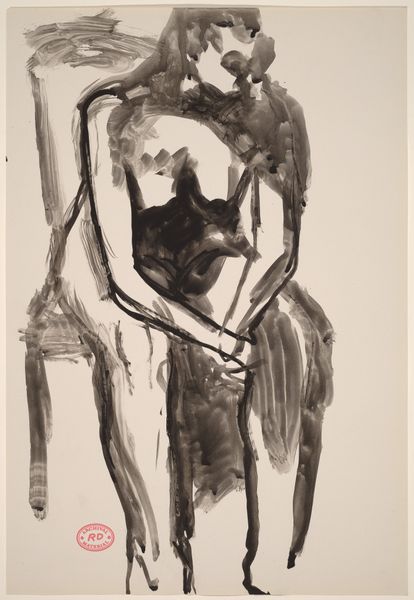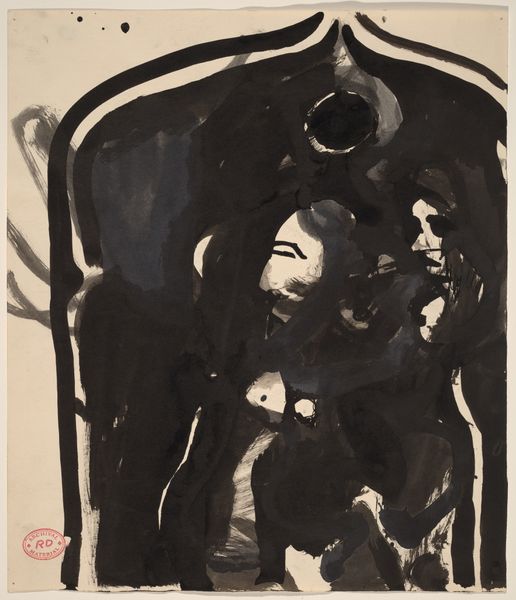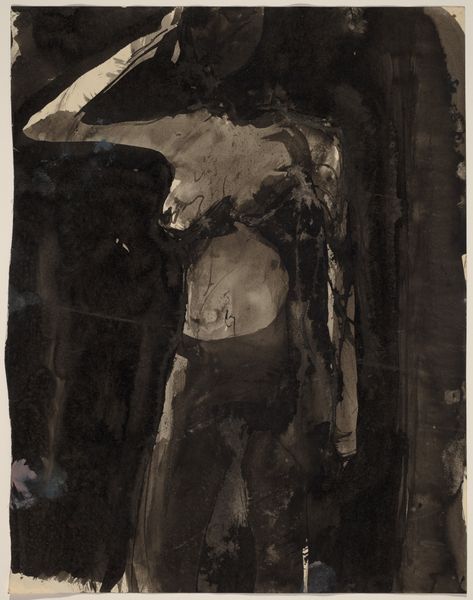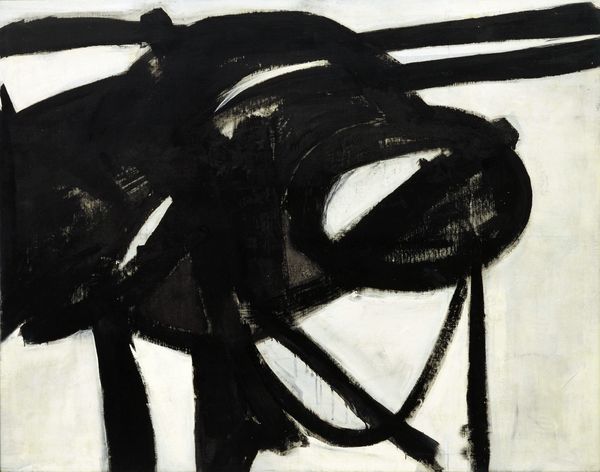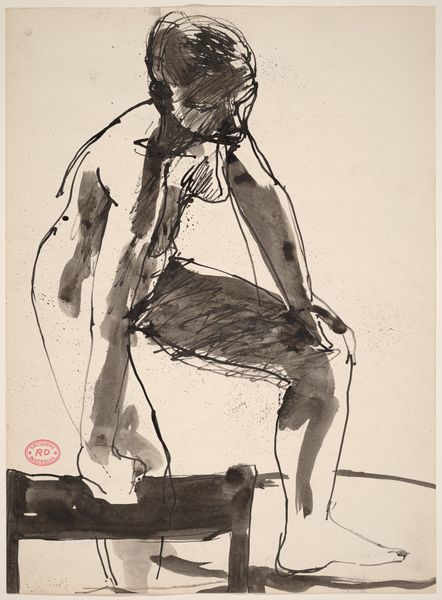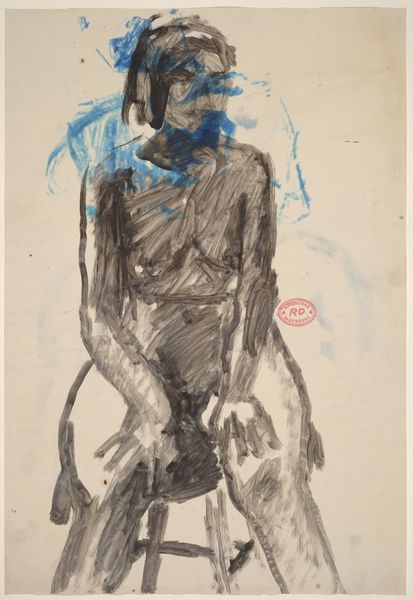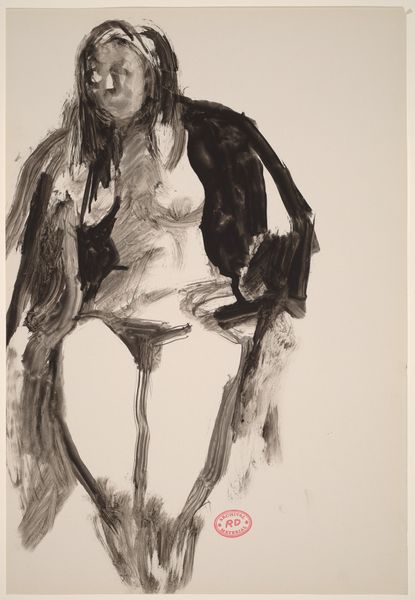
drawing, ink
#
portrait
#
drawing
#
pen sketch
#
figuration
#
ink
#
sketch
#
pen-ink sketch
#
expressionism
#
line
Dimensions: 42.8 x 26.13 cm
Copyright: Public domain
Editor: Here we have Modigliani’s “Bearded Man,” a sketch rendered in ink from 1905. I'm immediately struck by the bold, almost crude, application of ink. It feels very raw and immediate. What can you tell us about this portrait, thinking about the social or artistic landscape of the time? Curator: It’s fascinating to see Modigliani engaging with portraiture so early in his career. The rough, expressive lines point to the burgeoning Expressionist movement. Think about the broader cultural context – early 20th century, a time of immense social upheaval and anxieties, leading into the first World War. Artists were increasingly turning inward, rejecting academic conventions. This drawing, in its almost brutal honesty, reflects that unease. How do you see that unease conveyed in the image? Editor: I see it in the heavy brow and closed eyes. He doesn’t engage the viewer at all, almost like he is shielding himself from the world. The quick strokes of ink feel almost agitated. Curator: Exactly. And consider the institutions that might have supported or rejected this kind of work. Salons at the time still held significant sway, yet this aesthetic challenges their refined expectations. A drawing like this likely found a more receptive audience among smaller, more progressive galleries, spaces fostering artistic experimentation and social critique. It embodies a rejection of academic polish. Who do you think was the target audience for this work? Editor: Probably fellow artists, maybe a more intellectual crowd that gravitated towards the avant-garde? Someone interested in seeing art challenge traditional forms. Curator: Precisely. And by rejecting those traditional forms, Modigliani is participating in a dialogue, almost a rebellion, against the established artistic and social order of the time. Seeing how artists engaged with socio-political discourse by defying visual conventions provides a deeper insight into the era's complexity. Editor: I hadn't thought about the drawing as a form of rebellion, but I totally see that now! I’ll definitely be more attentive to those kinds of undercurrents.
Comments
No comments
Be the first to comment and join the conversation on the ultimate creative platform.
